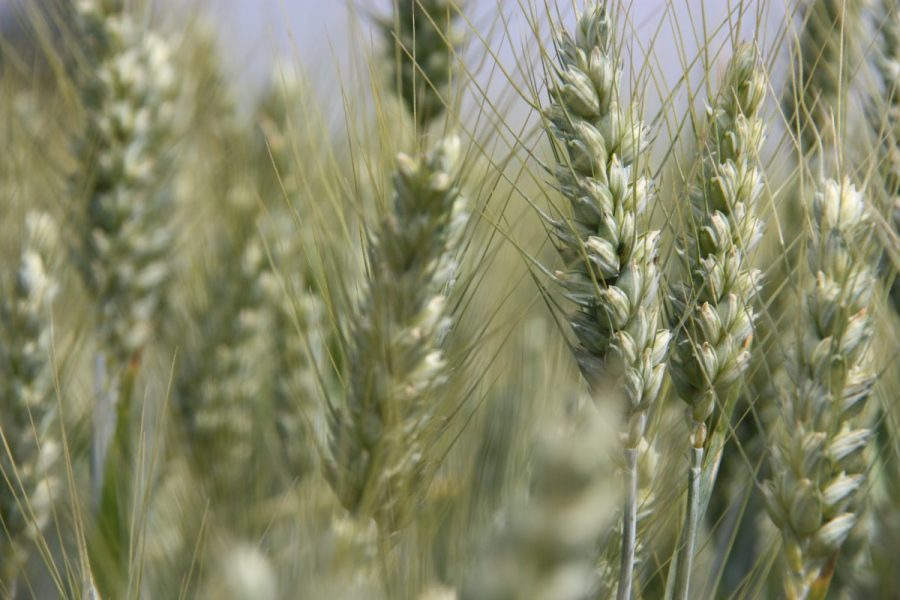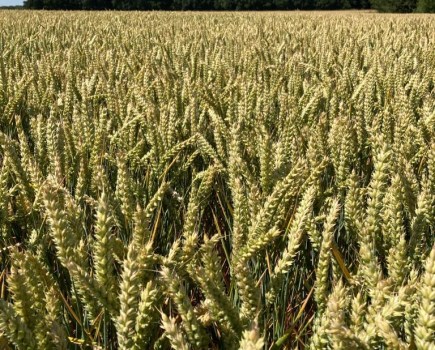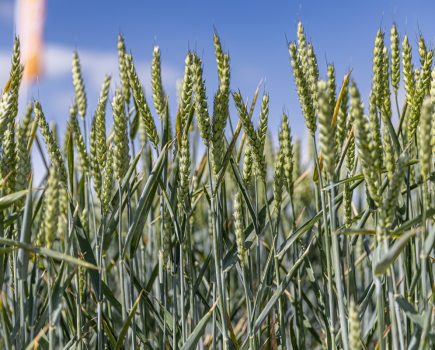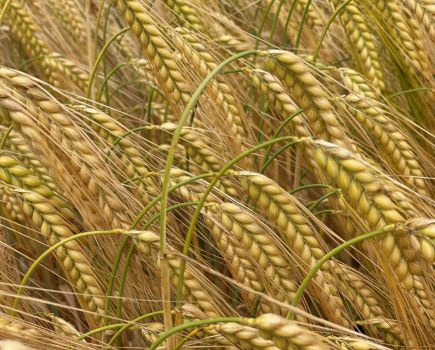As the latest Recommended List prepares to launch and excitement builds about the latest newcomers, breeders say there’s still merit in some of the older, ‘tried and tested’ varieties. CPM finds out more.
“Promising newcomers can sit alongside established performers, giving growers the best of both worlds.” OLIVIA BACON
By Charlotte Cunningham
Each year the launch of the latest Recommended List brings a flurry of excitement – new names dominate the headlines promising higher yields, stronger disease packages and improved agronomics. And while there’s no denying the innovation pipeline is impressive, it’s easy to overlook the quiet resilience of those slightly older, tried and tested varieties still doing a solid job on farm.
The appeal of new varieties is obvious. Breeders invest heavily in genetics that push the boundaries of what’s possible, whether that’s squeezing out another percent of yield or delivering more robust resistance to septoria. But, a shiny new tool isn’t necessarily the best – nor the only – tool for the job.
Established varieties, by contrast, have weathered multiple seasons in the field; their strengths and weaknesses are well understood by both growers and agronomists. This real-world data is invaluable and a variety’s performance under commercial conditions, across variable soils and in unpredictable weather, can often only be properly judged after several years.
It’s this reliability that explains why many farmers keep stalwarts in their rotations, says KWS’ Olivia Bacon. “Take, for example, Group 4 wheats that continue to underpin feed markets, or malting barleys with proven acceptance from end users. For those marketing into contracts, continuity of supply and known quality parameters often outweigh the allure of a marginally higher yield from a newcomer.”
Equally, in a season where input costs are high and risk appetite is low, a variety with a track record of resilience can feel like the safer bet. “Tried and tested disease scores, known standing power, and consistent harvest quality bring peace of mind,” she adds.
None of this diminishes the importance of new varieties, of course. Progress depends on adoption and many of the genetics now moving through the system are a step-change in their ability to withstand climatic and market pressures. The trick is not to view variety choice as a binary old versus new decision, but rather as a balanced portfolio, believes Olivia. “Promising newcomers can sit alongside established performers, giving growers the best of both worlds.”
For KWS, KWS Extase and KWS Dawsum continue to demonstrate their relevance, even as newer genetics – including from their own stable – arrive.
When Extase joined the Group 2 sector six years ago, it set a new benchmark for what growers could expect from a milling wheat, highlights Olivia.
“It offered something very different when it was first introduced – a high-yielding, quality wheat with outstanding septoria resistance and the strongest untreated performance on the RL at that time,” she explains.
“Since then, it’s proven itself across a wide range of conditions. It’s come through wet springs, dry summers and harsh winters without losing its consistency, which is why it still holds its place on farm today despite strong competition from newer Group 2s.”
That dependability has made Extase a safe option for many businesses, particularly where spray timings or rotations are under pressure, she believes. “Its combination of robust agronomics and marketable quality ensures it remains a versatile choice, even as other varieties edge forward on yield or protein.”
In the Group 4 hard sector, KWS Dawsum has carved out a similar role. Bred to perform across a range of drilling dates, soils and regions, it’s quickly established itself as one of the most widely grown feed wheats.
“Dawsum is very much the classic barn-filler,” says Olivia. “It combines high yields with strong disease resistance and a grain package that makes it suitable across the feed market, while its Hagberg score of over 300 also adds some additional marketing flexibility.
“Agronomically, it’s straightforward to manage, thanks to its shorter straw, good tillering and excellent standing power, and with a specific weight close to 80kg/hl, it gives growers a level of harvest security that’s invaluable in challenging seasons.”
Olivia is quick to point out that while Extase and Dawsum continue to prove their worth, they aren’t in competition with the next generation of wheats, but instead, provide balance.
“With margins under pressure, growers want genetics they can trust season after season,” she says. “That’s what makes varieties like Extase and Dawsum so important. At the same time, new introductions such as KWS Scope bring fresh opportunities – Scope delivers exceptional yield while Dawsum gives reassurance and resilience. Together, they allow growers to spread risk without compromising on performance.”
While they both still boast many benefits, the recent breakdown in yellow rust resistance must be noted. Like many other varieties on the current RL, Dawsum’s yellow rust resistance score has been reduced for 2026/27 following the emergence of an new strain of the disease earlier this year. But Olivia says this doesn’t appear to have harmed growers’ interest in the variety.
“Extase remains at 7 for yellow rust but Dawsum has had its score reduced. It now has a 5, but this is pretty much the average yellow rust score for a Group 4 variety.
“Yellow rust is still a relatively easy disease to control cost-effectively at T0 and growers are factoring this into their agronomy programmes for 2026. If you want a reliable, high yielding barn-filler, we still believe Dawsum is the variety to beat and I think growers feel the same way.”
Another variety continuing to command hectarage is Skyfall from RAGT. Although Skyfall first appeared almost a decade ago, it continues to carve out a strong position in Group 1, says RAGT’s Andrew Creasy.
“Group 1 tends to move slower than other categories, and Skyfall really hit the ground running. It combined yield with solid standing ability and, crucially, end users liked it from the start. That consistency is what’s cemented its place – you plant it and you know what you’re going to get.”
Perhaps one of Skyfall’s continually strongest assets is its sowing flexibility. “It has a massive drilling window,” explains Andrew. “There’s nothing wrong with putting it in during September, but equally you can take it right through the season – officially up to the end of February, but some growers have successfully pushed beyond that.
“Its low vernalisation requirement means it will still produce an ear. That makes it an insurance policy – the variety you know will get you out of a muddle if things don’t go quite to plan.”
The variety’s robust agronomics underpin this flexibility, with septoria resistance remaining relatively solid, while mildew resistance is also strong. Yellow rust ratings have slipped back, but Andrew stresses this is manageable.
“It requires watching, particularly early on, but growers know what’s coming with Skyfall. You can manage it with well-timed sprays at T0, and while later drilling can sometimes increase susceptibility, being proactive keeps it under control.
“The reality is, a lot of varieties that were considered ‘safe bets’ have shown weaknesses recently – with Skyfall, you know the rules of the game.”
The variety’s slightly earlier maturity is another bonus. “It’s not the earliest on the list, but it does come in ahead of the pack which suits many growers. On lighter soils, being an OWBM-resistant variety is also a plus. And while a significant area is grown for feed, the end product continues to appeal to millers – there’s still nothing quite like it in Group 1,” he suggests.
That’s not to say RAGT isn’t pushing forward with innovation. “Of course, we’re always looking at what’s next,” notes Andrew. “But Skyfall keeps us in touch with the end-user market; it complements the pipeline rather than competing with it. New genetics are important, but having a variety that people trust provides a foundation. Skyfall has bucked the trend of older varieties tailing off because it still ticks so many boxes.”
This article was taken from the latest issue of CPM. Read the article in full here.
For more articles like this, subscribe here.
Sign up for Crop Production Magazine’s FREE e-newsletter here.




